Results 4,281 to 4,290 of 12096
Thread: Anandtech News
-
09-03-14, 07:00 PM #4281
Anandtech: IFA 2014 Lenovo Announcements - Android Tablet, Gaming Laptop, Gaming Desk
The world’s largest PC maker arrived at the IFA trade show in Berlin with quite a few new products. Today Lenovo announced an 8” tablet, a 17” gaming laptop, and a gaming desktop PC.
The Lenovo TAB S8 is an 8” Android tablet with a 1920x1200 resolution “Infinity” screen, which is the marketing term for the thin bezels surrounding the 16:10 dispay. Powering this tablet is the Intel Atom Z3745 SoC which has four Bay Trail cores at up to 1.86 GHz. There are dual front speakers, 802.11 b/g/n Wi-Fi, and optional LTE data. There is an 8 MP rear camera with F/2.2 aperature, and a 1.6 MP fixed focus front facing camera. Lenovo claims the 4290 mAh battery will last up to seven hours. The TAB S8 is available in ebony, blue, canary yellow, and white, and starts at $199 with availability in September.Lenovo Devices TAB S8 Y70 Touch ERAZER X315 Form Factor 8" 1920x1200 IPS Touchscreen Tablet 17.3" 1920x1080 Touchscreen Laptop Desktop CPU Intel Atom Z3745 (1.86 GHz quad-core) up to Haswell Core i7 quad-core AMD Kaveri A8-7600 (3.1GHz quad-core)
AMD Kaveri A10-7850K (3.7GHz quad-core)Memory 2GB LPDDR3 Up to 16GB DDR3L A8: 8GB DDR3
A10: 12GB DDR3Graphics Intel HD Graphics Up to NVIDIA GTX-860M 4 GB VRAM A8: AMD Radeon R9 255 2 GB VRAM
A10: AMD Radeon R9 260 2 GB VRAMStorage 16 GB eMMC Up to 1 TB + 8 GB SSHD or 512 GB SSD A8: 1 TB + 8 GB SSHD
A10: 2 TB + 8 GB SSHDConnectivity Wi-Fi 802.11 b/g/n; BT 4.0; Optional LTE Optional BT4.0; 802.11ac/bgn Wi-Fi; 1G LAN 1G LAN, 802.11ac Wi-Fi Dimensions 209.8 x 123.8 x 7.9 mm
8.1 x 4.8 x 0.31 inches422.9 x 190.6 x 25.9 mm
16.6 x 11.4 x 1.1 inches375.9 x 360.7 x 175.3 mm
14.8 x 14.2 x 6.9 inchesWeight 299 g
0.65 lbs3.4 kg
7.5 lbs7.48 kg
16.5 lbs
Moving from the 299 gram (0.65 lb) tablet, we hit the other end of the spectrum with the 3.4 kilogram (7.5 lb) Y70 Touch gaming laptop. This is the first gaming laptop from Lenovo to be offered with a 17” screen size – in this case a 17.3” 1920x1080 touchscreen. This behemoth of a laptop is powered by up to a Core i7 quad-core processor, has up to 16 GB of DDR3L, and can be equipped with a NVIDIA GTX-860M GPU with 4 GB of dedicated memory. Storage options are up to 512 GB Solid State Drive (SSD), or up to a 1 TB Solid State Hybrid Drive (SSHD) which has 8 GB of SSD cache. Audio on the laptop should be a highlight feature, with JBL stereo speakers and an integrated 3.0 watt subwoofer built in. Wireless options are 802.11ac, and a gigabit Ethernet connection is also included. Battery life is rated for only 5 hours, but with a curb weight this high, this is not the kind of machine you would take and use on the go anyway. The only optical disc option is an optional external DVD/Blu-ray drive. A backlit keyboard with red lighting completes the experience. The Y70 Touch will be available in October with a starting price of $1299.
The final announcement today is the ERAZER X315, which Lenovo considers an affordable gaming desktop. With a starting price of $599, they could be right. Lenovo went with the AMD Kaveri for the X315 series, with choices of the A8-7600 (3.1 GHz quad-core) or A10-7859K (3.7 GHz quad-core) APUs. Memory is up to 8 GB for the A8 version, and 12 GB for the A10, and GPU options are the AMD Radeon R9 255 with 2 GB of memory for the A8, or an R9 260 with 2 GB memory for the A10. Storage options are both SSHD drives, with 1 TB for the A8 and 2 TB for the A10. This desktop also includes four USB 3.0 ports (with one always powered), two USB 2.0 ports, HDMI input, and wireless connectivity with 802.11ac supported in addition to the Ethernet port. The case includes front lighting and a “knight’s armor” design. The ERAZER X315 will be available in November.
Lenovo has announced three devices aimed at three completely different markets. The tablet looks to have a great display for the $199 price. A 17” laptop with a 1080p display seems like a low resolution offering for this day and age, but for a gaming device it makes sense with the amount of GPU power available in a mobile device. The desktop looks to be a decent gaming machine for a starting price of $599, but we will have to wait for a review to know for sure.
More...
-
09-03-14, 07:30 PM #4282
Anandtech: Matrox to Use AMD GPUs in Their Next Generation Multi-Display Graphics Car
If you go back far enough in the computer industry, there have been many successful video card companies. Back before the whole 3D craze kicked off, some of the fastest 2D video cards came courtesy of Matrox, and while they made some attempts at producing compelling 3D graphics cards, they were never able to grab the performance crown from NVIDIA or ATI. Their last real attempt at the 3D graphics market came in 2002 with the Parhelia-512, and as was the case with previous efforts it basically ended up falling short. Interestingly, the Parhelia-512 supported "surround gaming" long before AMD's Eyefinity, and that may have opened the gates for what would become Matrox's core focus over the next decade: multi-display video cards.
Since 2002, there haven't been many reviews of Matrox cards because the focus shifted to industries that need not just two or three but potentially a dozen or more displays all running from a single system. Their last graphics card update was in 2009, and since then the top product has been the M9188, a single card capable of driving eight DisplayPort or DVI connections, with the possibility of using two cards to drive 16 displays. Who needs that many displays? Well, the financial and security markets are two easy examples, as they both have use cases where six or more displays is "reasonable", and digital signage is another category where Matrox can provide useful technology. These are all professional markets, and the M9188 is priced accordingly ($1500+), but if you were looking to build a system with good graphics performance, Matrox basically hasn't been relevant as their cards seem to focus almost exclusively on 2D performance these days.
That might be changing with future products given today's announcement, as Matrox will be switching to AMD-designed GPUs for their next generation of multi-display products. These will continue to support Matrox's PowerDesk desktop management software, but what's not clear is whether Matrox will be doing much in the way of customized hardware. The announcement states that "key features of the selected AMD GPU include 28nm technology with 1.5 billion transistors; DirectX 11.2, OpenGL 4.4 and OpenCL 1.2 compatibility; shader model 5.0; PCI Express 3.0 and 128-bit memory interface."
From that we can surmise that Matrox will be using a variant of the Cape Verde GCN core, which is one of the lower performance GCN parts from AMD. In fact, Matrox may actually be using AMD's FirePro W600 cards, only with custom Matrox-developed software applications. This would also mean Matrox is looking at a maximum of six display outputs per graphics card (compared to eight on the M9188), but AMD already has the ability to run up to six GPUs in a system with the appropriate motherboard meaning up to 36 displays off a single system is theoretically possible.
The hardware is of course only part of the equation, and Matrox's PowerDesk software is something that benefits many businesses and professionals. Matrox notes that "critical productivity-enhancing features available with Matrox PowerDesk software will continue to be supported on the next line of Matrox graphics cards designed with AMD GPUs." These features include the ability to configure and manage multi-display setups, which can get tricky once you move past two or three displays. PowerDesk has tools to configure stretching, cloning, pivot, bezel management, and other items that are important for a professional multi-display configuration.
There are plenty of upsides to this announcement. For one, it allows Matrox to reallocate resources that are currently going into hardware development and instead focus on their core competency, which at this point is multi-display solutions. PowerDesk is well regarded in their target market, and this will allow Matrox to continue to improve the platform without trying to design their own hardware. AMD benefits as they're able to partner with Matrox and potentially sell their GPUs at higher "professional" prices, and they may also increase their share of digital signage and other multi-display markets.
And of course the customers that purchase the cards benefit as they get to move to a modern platform with support for all the latest DirectX, OpenGL, and OpenCL libraries. Long-term, this also opens the doors for Matrox to offer substantially higher performance 3D solutions from AMD for customers that need such features. Overall, this announcement isn't likely to affect most computer users, but it's good to see Matrox still hanging around after several decades in the computer graphics industry, something many of their competition from the 90s didn't manage to achieve.
More...
-
09-04-14, 01:56 AM #4283
Anandtech: HTC Announces the Desire 820
According to HTC, the Desire 816 proved to be a popular device in the mid-range smartphone market. Now, only a bit longer than six months after its release, the Desire 820 is here to replace the 816 as HTC's new flagship of the Desire lineup. It's one of the first Android devices with a 64-bit ARMv8 SoC, and the first to adopt Qualcomm's Snapdragon 615. Below I've laid out all the specifications for the Desire 820.
In many ways the Desire 820 is similar to its predecessor. The appearance is very similar, with colorful plastic backs and a front sporting HTC's Boomsound speakers on the top and bottom, with the front facing camera off to the left on the top bezel. The dimensions are also similar, with the 820 being ever so slightly taller and thinner than the 816. Keeping the same dimensions also allows the Desire 820 to retain the same 5.5" 1280x720 display and 9.88Whr internal battery. Where things get interesting is the SoC.HTC Desire 820 SoC Qualcomm Snapdragon 615 with 4 x Cortex A53 at 1.5GHz and 4 x Cortex A53 at 1.0GHz + Adreno 405 Memory and Storage 16GB NAND + MicroSDXC, 2GB RAM Display 5.5” 1280x720 LCD at 267ppi Cellular Connectivity 2G / 3G / 4G LTE (Qualcomm MDM9x25 UE Category 4 LTE) Dimensions 157.7 x 78.74 x 7.74 mm, 155g Camera 13 MP f/2.2 Rear Facing, 8MP Front Facing Battery 2600 mAh (9.88 Whr) Other Connectivity 802.11 a/b/g/n + BT 4.0 with aptX, USB2.0, GPS/GNSS, NFC SIM Size Nano-SIM (dual Nano-SIM SKU in certain markets) Operating System Android KitKat with HTC Sense 6
For a long time the hardware platform for mid-range devices has remained the same. Qualcomm Snapdragon 400 with 4 x Cortex A7 cores and either 1.5GB and 2GB of RAM. Obviously there are cost and performance reasons for this. Snapdragon 200 was a big step down, and Snapdragon 600 and 800 were a big step up. With the launch of Snapdragon 410, 610, and 615 there's finally some more options for the mid-range market.
HTC has chosen to adopt Qualcomm's Snapdragon 615 which sports 8 Cortex A53 cores in two clusters. One cluster of 4 cores is optimized for high performance, running at 1.5GHz, and the other is optimized for low power and runs at 1.0GHz. This is the first device to ship with Snapdragon 615, and one of the first 64-bit Android devices with the ARMv8 instruction set. However, support for 64-bit under Android won't exist until Android L ships later this year, and HTC is committing to updating the Desire 820 to Android L some time after it releases. For more information about Snapdragon 615 as well as Qualcomm's other Cortex A53 SoCs you can read the piece that Anand previously wrote about them.
Beyond the SoC there are a few other improvements. The RAM has been bumped from 1.5GB in the Desire 816 to 2GB in the 820. The front facing camera also moves up a notch from 5MP to 8MP. In terms of connectivity the Desire 820 retains the same Qualcomm MDM9x25 modem solution but now includes 5GHz band support on 802.11n and aptX audio support over Bluetooth which is appreciated by users like myself who use Bluetooth headphones.
HTC Desire 820 in Santorini WhiteWhile the Desire 820 won't win over buyers looking for the highest end smartphone, it definitely breaks new ground in the mid-range segment of the market. Like its predecessor, the Desire 820 comes in a wide variety of colors. Below is the entire list of color options, including whether they are a glossy or matte finish.
Tuxedo Grey (matte)Marble White (glossy)Santorini White (glossy)Milky-way Grey (glossy)Tangerine White (glossy)Saffron Grey (glossy)Flamingo Grey (glossy)Blue Mist (glossy)Monarch Orange (glossy)HTC plans to begin sales of the Desire 820 by the end of September, with the goal being to eventually have it at carriers and retailers worldwide. In certain markets, it will have dual Nano-SIM slots. Pricing is yet to be announced.
More...
-
09-04-14, 04:12 AM #4284
Anandtech: ECS Reveals LIVA Product Roadmap
The PC market is warming up to the ECS LIVA 'nettop' that we reviewed back in July. The fanless nature and low cost, as well as 'good-enough' performance serve as positives for the unit. Recently, ECS conducted a media event, where they gave a sneak peek into the future of the LIVA lineup. ECS also fielded questions from the media and tried to address the concerns raised.
One of the first things that needs to be cleared up is the configuration of the currently shipping 32 GB LIVA kit. Our review unit came with the Celeron N2806. Apparently, only the first batch of 600 units sported that SoC. Subsequent production batches have the Celeron N2807. The update addresses one of the improvement aspects we raised in our review - the use of a Bay Trail part enabled with Intel Quick Sync for transcoding. This opens up additional use-cases for the LIVA kit.
Coming back to the product roadmap, ECS is going to bring the 64 GB version into mass production soon. Next month, the company is also planning to release the BAT-MINI motherboard standalone into the market (users can bring their own chassis). In late November, we will see the 2nd generation LIVA. This is also based on Bay Trail, and comes in a solid metal chassis. ECS was mum on the internal configuration, but we can see that the chassis addresses concerns regarding the positioning of the USB ports, amongst other things.
Gallery: 2nd Generation Bay Trail LIVA Chassis & I/O
Early next year, ECS also plans to introduce an AMD-based unit. Obviously, the Bay Trail units will get upgraded to Braswell too. The LIVA kits are quite exciting, with the competition mainly coming in from the Bay Trail-based Zotac C-series. Zotac already has the Windows 8.1 + Bing OS pre-installation aspect fixed up. ECS needs to act fast on that, as the LIVA kits currently ship barebones. The attempts of the company to translate their success in the NUC / mini-PC OEM space to the consumer market brings choice to the users - and that is always good.
During the event, ECS also talked about their LIVA chassis design contest. The Z97 motherboards were also talked up, with emphasis in particular on the Z97-PK for overclockers.
More...
-
09-04-14, 04:12 AM #4285
Anandtech: Microsoft Launches New Mid-Range Lumias And Accessories At IFA 2014
Today in Berlin Microsoft announced two new midrange Windows Phones, as well as several accessories to compliment the Windows Phone ecosystem. We now have the rest of the phones to fill out the Lumia lineup with the Lumia 730/735 and Lumia 830 announced today. As well, there is a new wireless charger to match this year’s Lumia color lineup, and a Miracast enabled screen sharing device to allow the broadcast of your phone (or anything Miracast compatible) onto a television.
First up are the 4.7” Lumia 730 and Lumia 735 models which are “built for Skype calls and selfies” as described by Microsoft. These devices integrate a wide-angle 5 megapixel front facing camera with a f/2.4 aperature which is the feature point of this midrange phone. The internals are similar to the Lumia 630/635, with the Qualcomm Snapdragon 400 (MSM8926 is listed for both devices but the 730 is likely MSM8226 due to the lack of LTE) and a bump in memory over the less expensive cousins with 1 GB in these new models. Storage is 8 GB internal memory, with support for 128 GB microSD cards. The display is a 1280x720 AMOLED for 316 PPI, and has a curved glass on the front in addition to ClearBlack, SuperSensitive Touch, High Brightness Mode, and Sunlight readability enhancements. The rear camera also looks to be good for a mid-range phone, with a 6.7 megapixel sensor with Zeiss optics and a f/1.9 aperature as well as LED flash. NFC is included, as well as optional Qi wireless charging of the 2220 mAh removable battery via an exchangeable shell. To round out the experience, a new Lumia app has been created just for this model – Lumia Selfie.
The final phone to fill out the Lumia line is the Lumia 830. This device bumps up to a 5” display, but keeps the same resolution as the 73x models at 1280x720 as well as the curved glass. The SoC also stays the same, with the 1.2 GHz quad-core Snapdragon 400 (MSM8926) and 1 GB of memory, but the storage is bumped up to 16 GB internal NAND as well as up to 128 GB extra storage from microSD. The rear camera gets a spec bump up to a PureView 10 megapixel model with Zeiss optics, Rich Recording (3 HAAC microphones for up to Doiby 5.1 audio recording), and Optical Image Stabilization (OIS) which has been tweaked for the 830 with Microsoft claiming it to be the thinnest OIS of any Lumia phone to date. The Lumia 830 can also charge its removable 2200 mAh battery with Qi wireless charging. NFC is not listed, but due to the accessories coming up it seems likely it is included.
All of the phones announced today will ship with Windows Phone 8.1 and the Lumia Denim firmware update which brings some big features to the camera functions. The new firmware will allow for a new version of Lumia Camera (formerly Nokia Camera) and add a series of enhancements over what is currently offered. The new Lumia Camera improves camera startup and capture speeds, with Microsoft claiming only milliseconds between shots. 4K video recording is now available, with a long press of the camera button within the camera app. 4K video will be at 24 frames per second, and any single frame can be selected and saved as an image. Rich Capture adds the HDR mode that has been missing since, well, forever in Lumia Camera, and includes auto HDR and Dynamic Flash which lets you edit the photos after the fact to perfect an image. Finally, updated low-light algorithms improve the already impressive performance of PureView cameras in dim scenarios.New Lumia Lineup Nokia Lumia 730 Nokia Lumia 735 Nokia Lumia 830 CPU Qualcomm Snapdragon 400
MSM8226 1.2 GHz Cortex A7 quad-coreQualcomm Snapdragon 400
MSM8926 1.2 GHz Cortex A7 quad-coreQualcomm Snapdragon 400
MSM8926 1.2 GHz Cortex A7 quad-coreRAM/NAND 1 GB / 8 GB + MicroSD 1 GB / 8 GB + MicroSD 1 GB / 16 GB + MicroSD Display 4.7" 1280x720 OLED 4.7" 1280x720 OLED 5.0" 1280x720 Network GSM/WCDMA/HSPA+ up to 21 Mbps GSM/WCDMA/DC-HSPA/LTE up to 150 Mbps GSM/WCDMA/DC-HSPA/LTE up to 150 Mbps Dimensions 134.7 x 68.5 x 8.7 (mm) 134.7 x 68.5 x 8.9 (mm) 139.4 x 70.7 x 8.5 (mm) Weight 133 g 134.3 g 150 g Camera 6.7 MP rear camera, Zeiss Optics, f/1.9, LED Flash, 5 MP f/2.4 FFC 6.7 MP rear camera, Zeiss Optics, f/1.9, LED Flash, 5 MP f/2.4 FFC 10 MP rear camera, Zeiss Optics, OIS, LED Flash, FFC, 5.1 Dolby Digital HAAC audio Battery 2220 mAh removable 2220 mAh removable 2200 mAh removable Current Shipping OS Windows Phone 8.1 with Denim Firmware Windows Phone 8.1 with Denim Firmware Windows Phone 8.1 with Denim Firmware Connectivity 802.11 a/b/g/n + BT 4.0 LE, NFC, USB2.0, MPT, DLNA, FM Radio 802.11 a/b/g/n + BT 4.0 LE, NFC, USB2.0, MPT, DLNA, FM Radio 802.11 a/b/g/n + BT 4.0 LE, USB2.0, MPT, DLNA, FM Radio SIM Dual SIM Single SIM Single SIM
The updated Lumia Camera app will come to the Lumia 830 in Q4 2014, and to the Lumia Icon, 930, and 1520 as part of the Denim firmware update following partner testing and approvals (read carriers).
In addition, two accessories were revealed today. First, there is a new Wireless Charging Plate. The charging plate connects to the phone over Bluetooth with the phone to give status updates for the phone, and will even alert you if the phone needs to be charge. The charging plate will perform a “breathing” light to invite you to charge your phone if the device paired to it has 30% or lower battery. In addition, the charging plate will give two blinks to display notifications such as a missed call or SMS message. While charging, the plate will show a continuous light, and if there is a charging error, it will continually blink until the issue is addressed. The Nokia Wireless Charging Plate is available in green, orange, or white to match the 2014 Lumia colors. Pricing is expected to be $59 USD and EUR 59, with availability in October.
The final accessory is the long named Microsoft Screen Sharing For Lumia Phones HD-10. This Miracast receiver allows you to beam your smartphone display and audio to any HDMI TV or monitor. The HD-10 is NFC enabled, allowing easy pairing by just tapping a phone on the NFC disc, which is removable as well so the disc can be kept away from the receiver. Being Miracast, the device is compatible with any Wi-Fi certified Miracast product. Availability is September with a MSRP of $79 USD and EUR 79.
The new smartphones look like a nice mid-range device to fill the huge gap that exists between the Lumia 630 and the Lumia 930. Pricing was not available, which will be the key to where these fit in the market, but there again is a large gap between the Lumia 630/635 which is already available for $99 or so, and the Lumia 930 which is closer to $600. The bump to 1 GB of RAM and the display resolution increase are the most important additions to these devices to pull them away from the low end 630. Both the 730 and 830 have decent looking cameras, with the 830 even being added to the PureView stable now with OIS to back the 10 megapixel sensor.
The charging plate looks quite interesting, and having it pair with the phone via Bluetooth is a nice trick. The Miracast receiver is the one thing that Miracast needed more than anything, assuming it works well and is as easy to use as indicated. The inclusion of NFC should assist for smartphone users at least for initial setup.
More...
-
09-04-14, 07:41 AM #4286
Anandtech: IFA 2014 Lenovo Launches More PCs - From Laptops To Tabletops
At the IFA convention in Berlin, Lenovo launched two PCs and a tablet yesterday, and today they are at it again with the new ThinkPad Helix 2-in-1 Ultrabook, HORIZON tabletop PCs, the ThinkCenter Tiny-in-One (TIO), and the Edge 15 laptop. All are a different take on an existing device.
In May 2013, Lenovo released the ThinkPad Helix which is a 2-in-1 laptop with a “Rip & Flip” keyboard which can be detached from the tablet. The current model is getting a bit long in the tooth, with Ivy Bridge processors as the available options. Today, Lenovo announced an updated version of the Helix. The new model is 12% lighter than the outgoing version, coming it at 1.8 lbs, and at 0.38 inches thick, it is 15% thinner than the first gen device. The processors are getting a big boost, with Intel Core M CPUs now under the hood which should boost performance, but even more so, battery life and thermals. The Helix will function in five modes – tablet, stand, tent, laptop, and desktop. ThinkPads are known to have quality keyboards, and the ThinkPad Helix will hopefully keep to that tradition even though it is detachable. The Helix is well suited for business, with both a fingerprint scanner and a smart card reader. The 11.6” display is 1920x1080, is topped with Corning Gorilla Glass, and has provisions for a digitizer pen. The Helix will start at $999 and is available starting in October.
The second laptop announced was the Edge 15, which Lenovo claims is its thinnest 15 inch consumer laptop yet. At under an inch thick, and with a weight of 5 lbs, it doesn’t quite match some of the other 15” ultrabooks on the market for thickness and weight, but it does pack a lot of compute under the hood in addition to being able to fold the display back into a stand mode for media consumption. The Edge 15 can be configured with up to a Haswell Core i7 CPU, 16 GB DDR3L, optional NVIDIA GeForce GT840M graphics, and either a 1 TB hybrid drive with 16 GB of Flash, or a 256 GB SSD. The 15.6” 1920x1080 display also includes 10-point multitouch, and Lenovo claims up to 8 hours of battery life. The Edge 15 goes on sale in October starting at $899.
Lenovo also introduced an interesting take on the All-In-One (AIO) computer with the ThinkCentre Tiny-in-One 23. This is the first ever modular AIO for business. The Tiny-in-One is a 23” 1920x1080 display with a mount for the ThinkCentre Tiny PC on the back side. Any Tiny PC from Lenovo can be used, and it requires no tools. If your business PCs are getting out of date, you can simple pop a new Tiny PC in the back for a new system, or if there is an error with either the monitor or the PC, both do not need to be repaired or replaced like a traditional AIO. All cable connections are done inside, and a single power cord is all that is required. At $279, the Tiny-in-One 23 is not even much more than a traditional monitor. Availability begins in October.
Finally, Lenovo also launched an updated version of the original HORIZON 2 27” tabletop PC. The new models are the HORIZON 2s and 2e. The “s” in 2s stands for slim, with the 2s dropping 10 lbs off of the original HORIZON 2, while still providing the same Stand and Flat modes. Lenovo also has an optional stand made of aluminum which also serves as a charging station for the 27” 1920x1080 tablet. The HORIZON 2e is a smaller version of the original, with a 21.5” 1920x1080 display. Both models are powered by Haswell Core processors and battery life of 2.5 hours for the 2s and 3 hours for the 2e. Prices start at $749 for the HORIZON 2e, and $949 for the larger HORIZON 2s, with availability in October.
Lenovo seems to have a device for everyone. At IFA, they have now announced everything from an 8” tablet for $199 to a 27” tabletop PC. I believe the Tiny-in-One is an interesting idea, with the upgradability of a desktop system but the smaller footprint of an AIO computer. The ThinkPad Helix should be a great device to showcase the Core M, and looks to be a better laptop than some other 2-in-1 devices with detachable keyboards. However we will need to wait for final judgment until we can see some of these devices for ourselves to see just how much of the promise they deliver.
More...
-
09-04-14, 01:06 PM #4287
Anandtech: GIGABYTE Server GA-7PESH3 Motherboard Review
A dual processor system sounds awesome to the home user but in reality it is almost entirely a professional market. The prosumer has to use Xeons at JEDEC memory speeds and then ensure that the software is NUMA aware, especially if it decides searching for data in the other processor's L3 cache. However now that GIGABYTE Server is selling to the prosumer via Newegg, they sent us the GA-7PESH3 for review.
More...
-
09-04-14, 01:06 PM #4288
Anandtech: Lenovo Announces the VIBE X2 With 8-Core CPU
Lenovo has made quite a few announcements at IFA so far, but most have related to their traditional PC business. Today they announced a new high end smartphone branded the Lenovo VIBE X2, a sequel to 2013's VIBE X. Below I've laid out the specifications for Lenovo's new flagship.
The VIBE X2 looks a lot different from its predecessor. The rounded corners and tapered edges have been replaced with flat edges and a more rectangular profile. The VIBE X2 is also smaller but thicker than the VIBE X, which was likely done to help accommodate the larger battery. Lenovo is calling the VIBE X2 a "layered" smartphone, in reference to the three distinct color layers that make up the body of the device.Lenovo VIBE X2 SoC MediaTek MT6595m True8Core
8 x Cortex A7 at 2.0GHzMemory and Storage 32GB NAND, 2GB RAM Display 5” 1920x1080 IPS LCD 441ppi Cellular Connectivity 2G / 3G / 4G LTE (Category 4 LTE) Dimensions 140.2 x 68.6 x 7.3 mm, 120g Camera 13 MP Rear Facing, 5MP Front Facing Battery 2300 mAh (8.74 Whr) Other Connectivity 802.11 b/g/n/ac + BT 4.0, USB2.0, GPS/GNSS SIM Size Micro-SIM (dual Micro-SIM SKU in certain markets) Operating System Android KitKat with VIBE UI 2.0
In terms of specs, the VIBE X2 is similar to the VIBE X. It retains the 13MP rear camera and 5MP front camera, along with the 5" 1920x1080 IPS panel on the front. However, the VIBE X2 sports improved connectivity and processing power. Support for 802.11ac, Bluetooth 4.0, and category 4 LTE have all been added. The new SoC is MediaTek's MT6595m True8Core which has 8 Cortex A7 cores clocked at 2.0GHz. To my knowledge this is one of the only, if not the only mobile SoC to adopt 8 of the same cores all clocked at the same frequency. Whether or not this is useful is certainly a subject of debate. There's not likely to be any scenario on a smartphone where 8 cores will be utilized simultaneously, and so the 8 core design is probably for marketing rather than performance reasons.
The VIBE X2 will be launching in China in October of this year. Other countries in Asia, Eastern Europe, and the Middle East will receive the phone shortly after. Certain markets such as China will receive a dual-SIM SKU. Retail pricing is pegged at $429 USD.
More...
-
09-04-14, 05:00 PM #4289
Anandtech: Huawei Ascent Mate 7 & Ascent G7 Hands-On
Today Huawei launches the successor to the Ascend Mate, the Mate 7 and a new mid-range device called the Ascent G7. I've got my hands on a Mate 7 and managed to play a bit with the G7 today at Huawei's event in Berlin. The Mate 7 directly attacks Samsung's Note lineup in the phablet sector, while the G7 being still very big at 5.5" is more of a budget device while trying to make little compromises.
First up, let's see the raw specs that both devices offer.
Let's start up with the Ascend Mate 7. The first thing you notice is that this is a big device. Coming with a 6" screen this is one of the bigger candidates in the phablet space. What Huawei has done is reduce the bezels on the device as much as possible, that in the end the resulting device dimensions only slightly outsize the newly announced Note 4 with its 5.7" screen. The new JDI manufactured IPS-NEO screen promises a constrast ratio of 1500:1 and also brings with it increased brightness and reduced power, with Huawei stating 15% better transmissitivity and 15% reduced power consumption. We'll be sure to test this display to the fullest extent, as at first glance it seems outstanding. Filling up a 83% bezel-to-device-footprint ratio this is currently the most "screen" on a device out there. I have to point out that Huawei was very misleading in its rendered presentation pictures as it portrayed the phone as such that it gave an impression that the screen begins immediately where the bezel ends, however in reality there's another 3mm of black nothingness on both sides before you meet the first pixels.Ascend Mate 7 Ascent G7 SoC Hi3630 "Kirin 925"
4xCortex A15 @ 1.8GHz
4xCortex A7 @ 1.3GHz
Mali T628MP4 GPU @ 600MHzMSM8916 "Snapdragon 410"
4xCortex A53 @ 1.2GHz
Adreno 306 GPURAM/NAND 2 GB LPDDR3 & 16GB NAND or
3GB LPDDR3 & 32GB NAND
& microSD2GB LPDDR3, 16GB NAND
& microSDDisplay 6" 1080p JDI IPS-NEO 5.5" 720p IPS Network 2G / 3G / 4G LTE FDD & TDD
(HiSilicon Balong IP block UE Category 6 LTE)2G / 3G / 4G LTE FDD or TDD
(Qualcomm MDM9x25 IP block UE Category 4 LTE)Dimensions 157 x 81 x 7.9mm, 185 grams ? x ? x 7.6 mm, 165 grams Camera 13MP Sony IMX214 BSI sensor,
F/2.0, 28mm wide angle lens
5MP FFC non-spherical lens13MP Sony IMX214 BSI sensor,
F/2.0, 28mm wide angle lens
5MP FFC 88° angle lensBattery 4100 mAh, 3.85V, 15.78 Whr 3000 mAh, 3.85V, 11.55 Whr OS Android 4.4.2 with EmotionUI 3.0 Android 4.4.2 with EmotionUI 3.0 Connectivity 802.11a/b/g/n/ac + BT 4.1, USB2.0, GPS/GNSS, MHL, DLNA, NFC 802.11a/b/g/n/ac + BT 4.1, USB2.0, GPS/GNSS, MHL, DLNA, NFC SIM Size MicroSIM & NanoSIM MicroSIM & NanoSIM
The same HiSilicon Hi3630 powers the Mate 7 that was released for the Honor 6, however it gets a slight 100MHz clock boost on the A15 cores and gets brandished as the Kirin 925. I made sure to ask a Huawei representative if we'd see various regional models offering various connectivity options, and to my delight this time we have full use of the Balong category 6 LTE modem provided in the SoC as the device offers full RF and antenna support for both FDD and TDD on the global model. Only variations will be select Chinese models which need to support a wider range of TDD bands to take advantage of their national carrier's networks. This is all backed by two redundant antennas on the top and bottom of the device. Apparently the device is able to switch between them as the main connectivity antenna if the attenuation on either gets too high due to external influences like gripping or holding the device. Huawei reports a 40% reduction in call drops and a 15dB gain in signal strength.
Huawei was trying to praise a so called i3 co-processor, but this is something that devices have had since the Note 2 in the form of external "sensorhubs" which are most of the time little ARM Cortex M3 microcontrollers, with Qualcomm first integrating them into their SoCs such as the Snapdragon 800.
The body of the Mate 7 houses an enormous 4100mAh battery offering 15.78Wh of power: this is more battery capacity than found in the Nexus 7 2013, but inside a phone. Huawei made this possible by dedicating a very large amount of internal device space to the battery alone, with it taking the whole width of the device and filling up from the top of the bottom bezel up to the fingerprint sensor in height. This is all encased in an aluminium body and keeping a thickness of 7.9mm at the thickest point in the center of the device. Even though it is made of aluminium, the device is still able to offer NFC with help of a little gap above the camera and the NFC coil surrounding the camera and flash; the top and bottom parts of the Mate 7 remain plastic. Huawei tried to spin a 3.5mm thickness at the edges, but I'd say 5mm is the more realistic measurement that we see on the sides of the device. The ergonomics are very pleasing and the build quality is top notch.
On the bottom we find a standard microUSB 2.0 connector, which is oddly enough not in the very middle of the device and makes for odd asymetry in terms of design. The power button is found on the right side at thumb's reach and the volume buttons are located right above it. On the left side we have the main SIM tray and the secondary tray that may house both a nanoSIM and a microSD card, which by the way means the phone has full dual-SIM capabilities.
The camera setup is relatively established with offering the same IMX214 camera sensor as found on the Honor 6. The G7 offers by the way the same optics system. The F2.0 28mm wide angle lens is a welcome addition that I hope more manufacturers would adopt. On the front camera we see a 5MP sensor, and with something Huawei names a non-spherical lens, which I'll have to investigate more to see what it brings.
The main attraction of the Mate 7 is the new fingerprint sensor found below the back camera. This is a touch-sensor manufactured by Swiss company FPC, which may be the FPC1020 that was announced late last year. As such, Huawei is the first manufacturer follwing Apple's TouchID to offer a full touch sensor as opposed to a swipe implementation as found on Samsung's devices. It offers full 360° readout support, no matter if you have wet fingers or not. Huawei implements a RF sensing ring around the sensor that makes it possible to detect your finger even when the device is sleeping (as it will wake the device up). This allows for turning on of the devie and unlocking in a single action. I tested out the feature and it works perfectly. The fingerprint registration is identical to Apple's, with you having to press your fingerprint multiple times for better characterization of your fingerprint. The success rate was near 100% for what I didn't consider a very serious registration procedure on my part. The touch sensor can also be used as a camera shutter button when taking photos.
On the software side we see an update of EmotionUI to version 3.0. I've been working on the Honor 6 review for the last few weeks which had version 2.3 on it, and the change is quite enormous as we go for a full redesign from 2.x's pre-iOS 7 style to literarly a new design language that seems to outright copy iOS 7 in many aspects. I'll dwell into the software more in the following weeks, but I can already say that this is now my favorite custom Android framework and skin implementation out of all OEMs out there, as it brings not only design, but also a termendous amount of exclusive and useful features with it.
The G7 on the other hand is a more mixed bag. It is a 5.5" 720p phone with a new Snapdragon 410 SoC, and is rightfully so a mid-range phone priced at 299€. As mentioned before, it offers the same camera setup as the Mate 7. The 7.6mm thin body housing a 3000mAh battery (which at time of writing I now considered small compared to the Mate 7's) is made out of plastic and was noticeably less impressive than the Mate 7's. Huawei didn't communicate its exact dimensions but it felt similar in size to the G3 considering both have 5.5" screens. I really don't have that much to say about it, and neither did Huawei as the presenter at the unveiling offered an excrutiating 12 minute presentation with very little substantial content.
The Huawei Ascend Mate 7 and the G7 both come in either silver and gold, with the Mate 7 and G7 having each respectively an additional option of black and grey. At 499€ for 2GB/16GB and 599€ for the 3GB/32GB models the Mate 7 will be available end of october in China and Hong Kong and UK, Germany, Italy, France and Spain in Europe, with a global launch following that. The G7 with its 299€ MSRP will be available end september in Germany, Italy, Spain, Denmark, Hungary, the Netherlands Turkey, Poland, Norway, South Africa and Mexico, with other markets to follow.
Least to say I was impressed by the Mate 7. It seems like a great device overall - I know that the SoC has some faults (specially GPU performance) and you will be able to read about that soon as I finish up the Honor 6 review, however the phone's build quality, great screen, connectivity features and gigantic battery all make up for it.
More...
-
09-04-14, 07:01 PM #4290
Anandtech: Sony SmartWatch 3 & SmartBand Talk Hands-On
With Sony's launch event we had the occasion to see their first Android Wear device. Sony presents the SmartWatch 3 and the SmartBand Talk wearable device watches.
The SmartWatch 3 sports a 1.6" 320x320 TFT LCD ran by a Qualcomm Snapdragon 200 SoC and powered by a 420mAh battery. We find 512MB of RAM and 4GB of system NAND.
The device is IP68 certified even though it is charged by a standard microUSB port. There's not much to say about the specifications of the watch as Sony has kept it pretty simple. Since Android Wear is not customizeable by OEMs, there is no differentiation between it and previous square Wear smartwatches.
In terms of design, there's only one way I would describe it: rubbery. With the rubber armband extending over the sides of the watch, we're talking a lot of rubber. It feels like one of those child-watches that I remember keenly, only that it's not coloured bright orange, which is kind of ironic because Sony will offer some gaudy colour options such as lime later in the wear. We only had black and white models available at IFA and the black one was already kind of odd looking.
I also found the device too be a bit too big for my taste, but then again I was never fan of big watches. The microUSB port is protected by a little cover which you need to keep lifted up while trying to plug in the cable. I found this very annoying as I couldn't make the cover stay on the side while plugging the cable in - it's so small and fiddly that it took me a good 20 seconds to connect it.
The other wearable is the SmartBand Talk. Sony markets it as a "lifelogger" device which tracks your movement via gyroscope and accelerometer and saves the data. The device also allows to be used pretty much as a bluetooth headset, just that it's not a headset. You can talk to it and it has a little speaker. It has a 1.4" curved narrow e-paper display that allows it to extremely power efficient. The band sports a tiny 70mAh battery.
Frankly, I'll admit that I didn't spend too much time with the SmartBand because I simply did not see any use for it. It kinda perplexes me and seems like some little gimmick gadget that you could just skip and get the real deal in the form of a full-fledges smart-watch.
All in all, Sony's new wearables don't seem to be any new groundbreaking inovation. It adds to the wearable ecosystem and I'm surely happy for that - but when it comes to actually buying one, I think people will find better options in devices from the competition.
More...
Thread Information
Users Browsing this Thread
There are currently 60 users browsing this thread. (0 members and 60 guests)




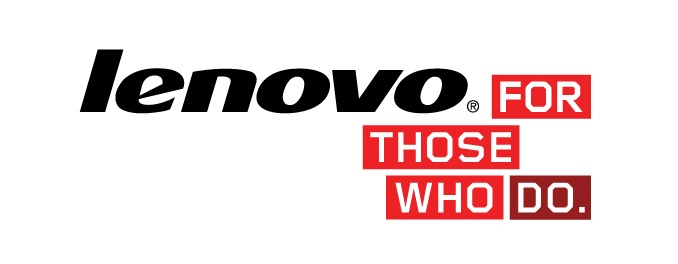

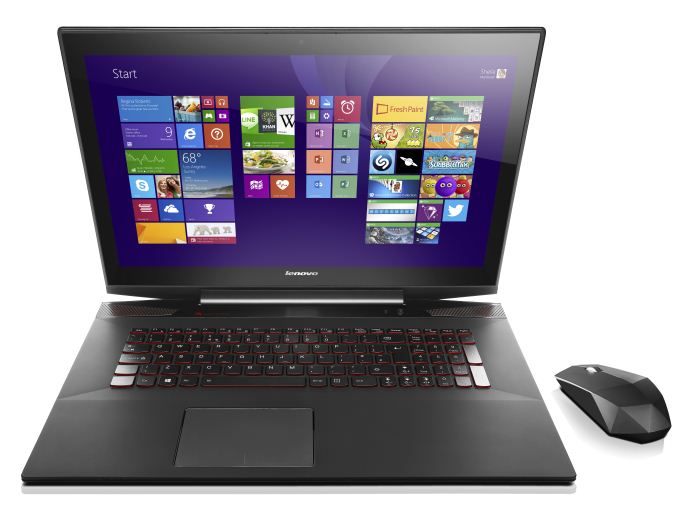
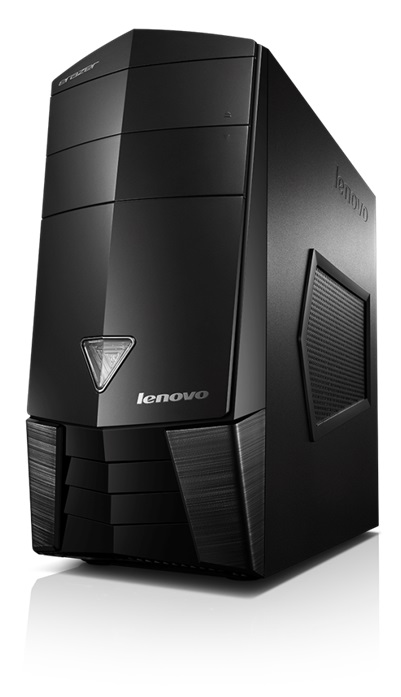

 Quote
Quote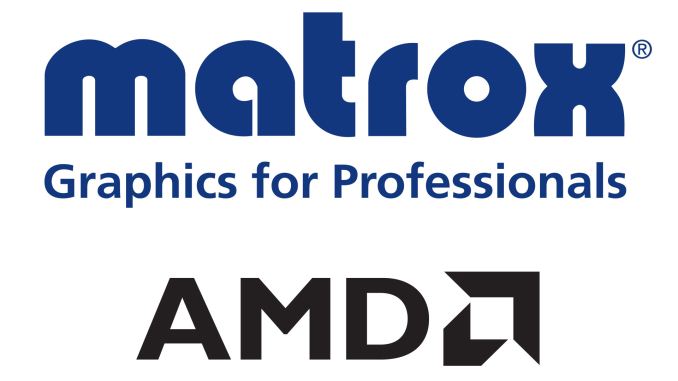

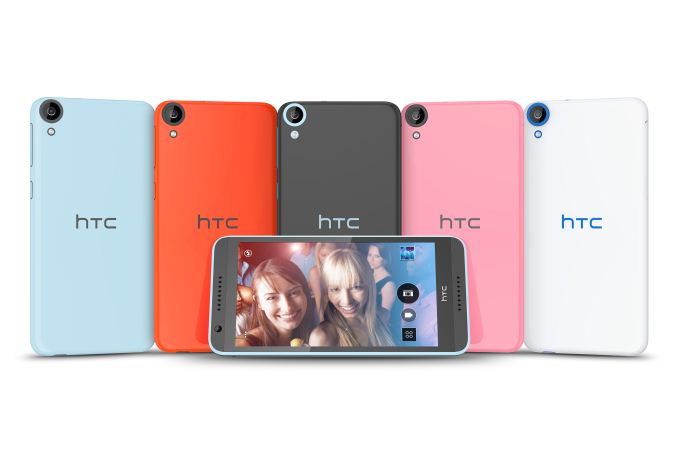
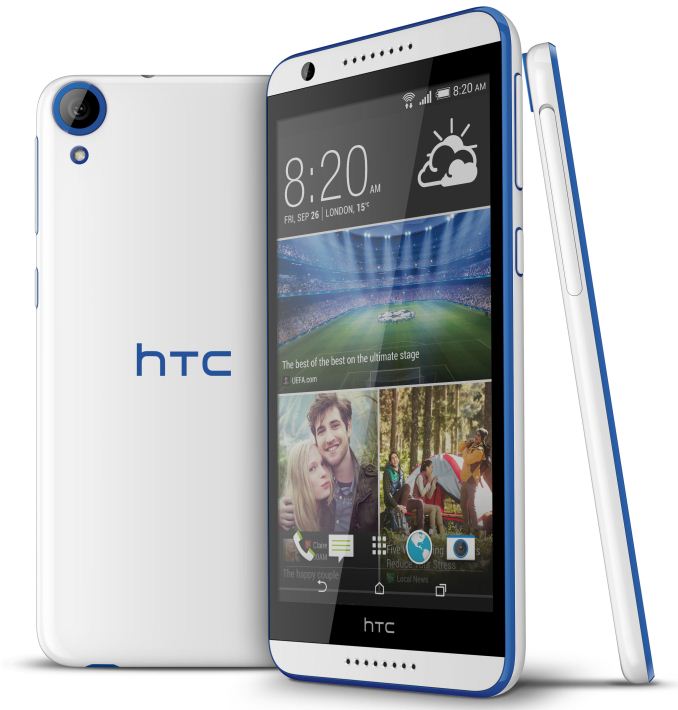
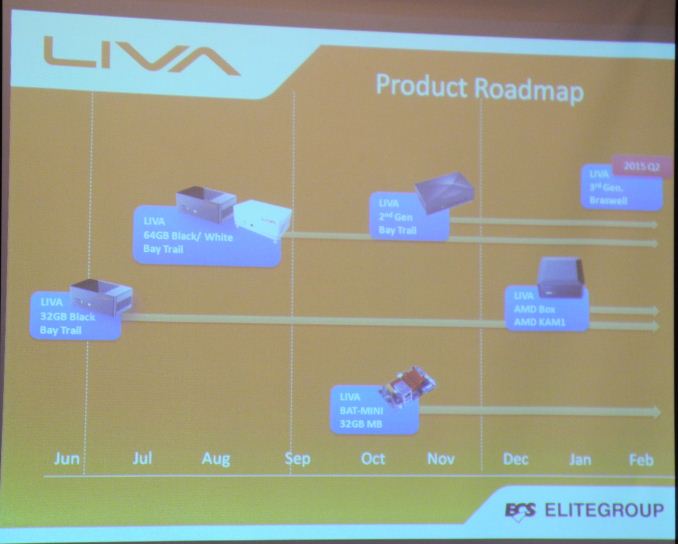




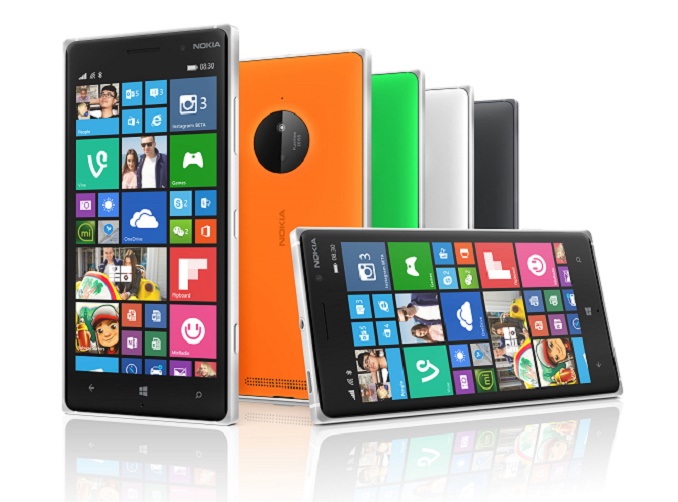





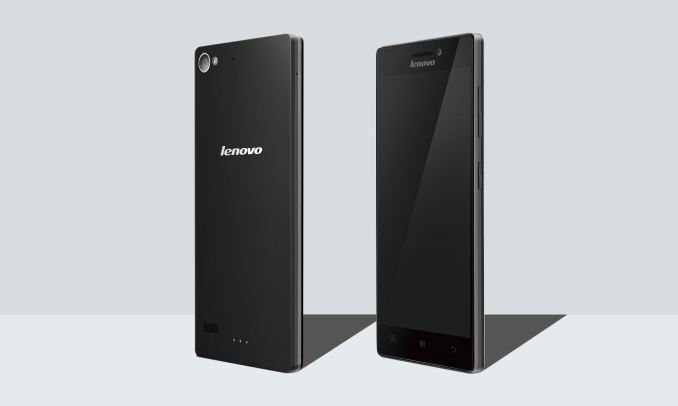

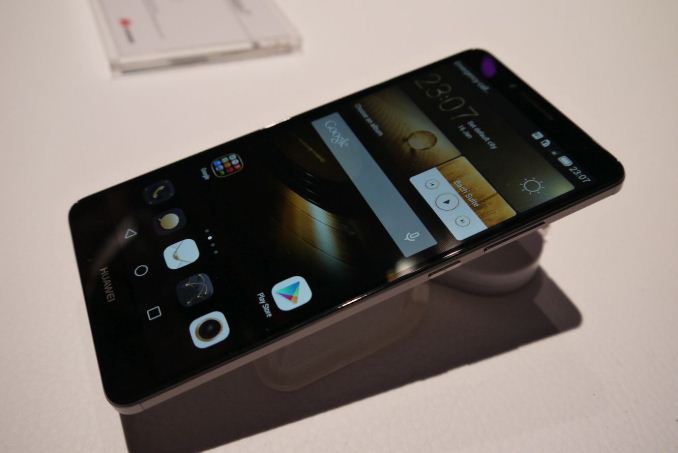
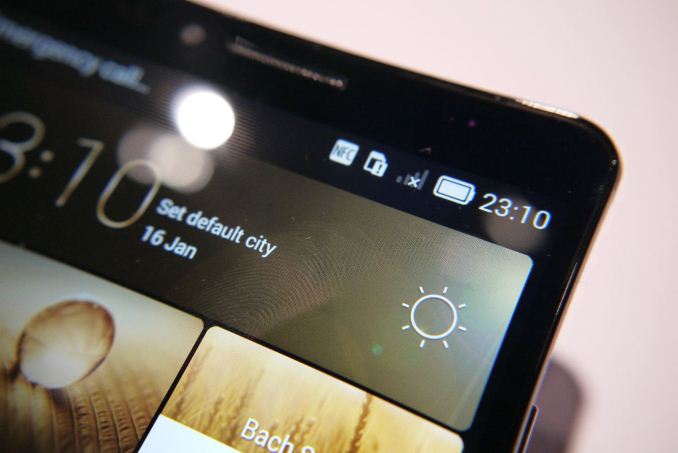







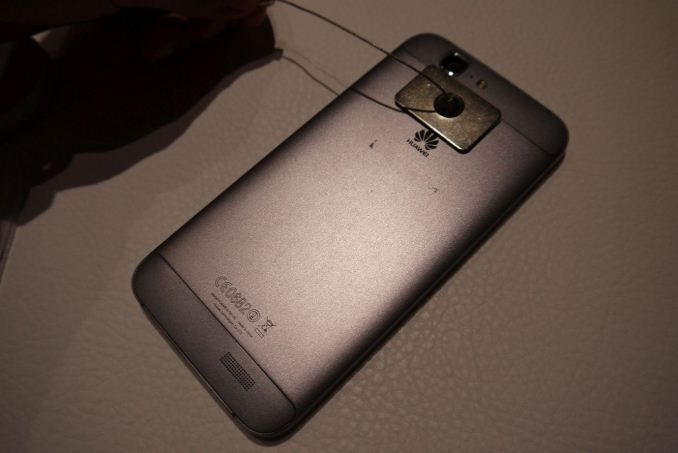
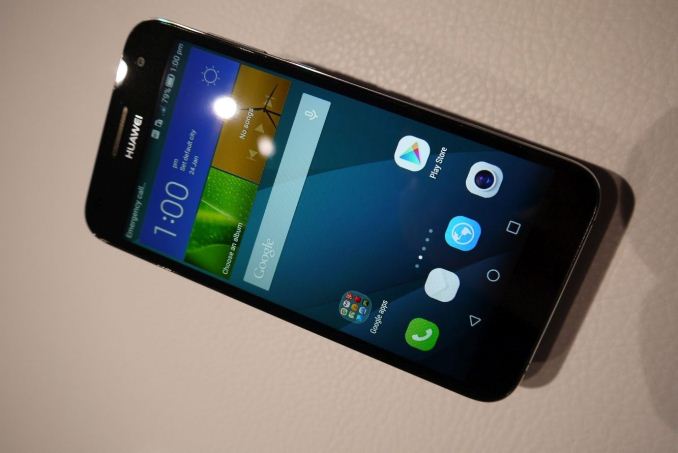































Bookmarks